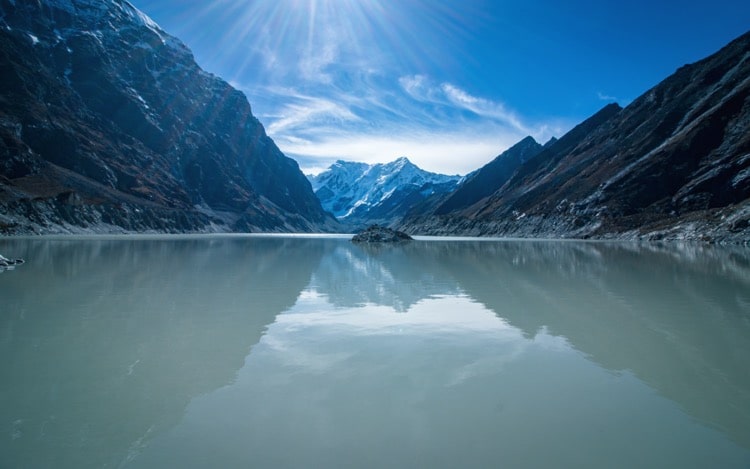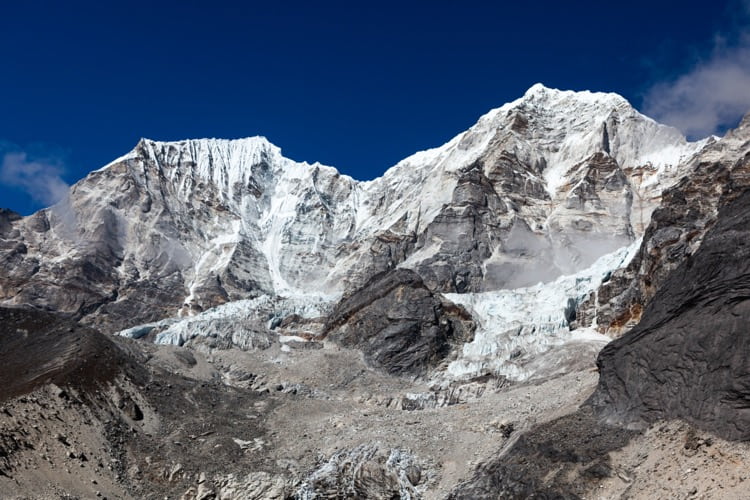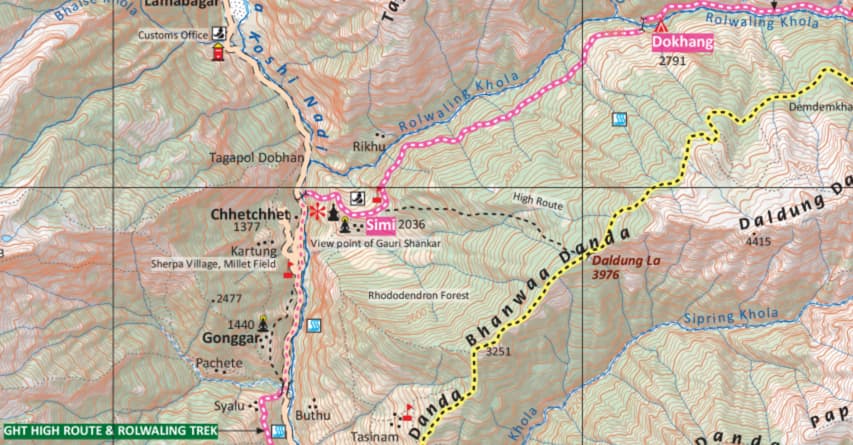Tsho Rolpa Lake Trek
Request a Quote (?)
- Satisfied Client
- Personalised Guide
- Instant Response
Get Instant Response:
+977-9851329446 (Whatsapp)
| Starts at: Shigati | Ends at: Shigati |
| Trek Region: Rolwaling | Transport: Drive |
| Duration: 16 Days | Trip Grade: Demanding |
| Max Altitude: 4183 m / 13723 ft | Accommodation: Teahouse |
Tso Rolpa Lake, lying at an altitude of 4183 m, is between the mountain ranges of Langtang and Everest and is one of the biggest glacier lakes in Nepal.
Situated in the north eastern region of the country, the road to the starting point of the trek (the trading town of Dolakha) passes along the route from Kathmandu to Lhasa, Tibet. The lake itself is situated in the Rolwaling Valley, one of the seven hidden valleys where the Yeti is said to live!
Although it is highly unlikely to meet a Yeti on the trail, there are interesting terraced fields, fast-flowing rivers, forests and two great glaciers to see as well as the stunning glacier lake of Tso Rolpa. This trek starts at a low altitude so there is plenty of time for trekkers to get acclimatized before reaching the lake. Although the trail does not reach high altitude, trekking days are generally 6-8 hours long so a good level of fitness is required.
Mountains that can be seen on this route include Gauri Shankar (7,145m) and Menlungtse (7,181m), among others. The trail runs through Brahmin, Chhetri, Tamang and Sherpa villages, as well as past Bigu Gompa, home to over 300 nuns. This area is mainly Buddhist as can be recognised by the mani stones along the trail and prayer flags fluttering in the wind.
For those who do not want to trek at very high altitudes and are interested in the culture of the peoples of the Everest region this trek is a good option.
Tsho Rolpa Lake Trek Itinerary
Day 1: Kathmandu to Shigati (Drive)
Shigati – 950 m / 3116 ft – 9 hr
Day 2: Shigati to Jagat
Jagat – 1050 m / 3444 ft – 6 hrs
Day 3: Jagat to Simi Gaun
Simi Gaun- 1900 m / 6233 ft – 5 hrs
Day 4: Simi Gaun to Gyalchen
Gyalchen – 3300 m / 10826 ft – 6 hrs
Day 5: Gyalchen to Beding
Beding – 3650 m / 11975 ft – 4 hrs
Day 6: Beding to Na Gaun
Na Gaun- 4100 m / 13451 ft – 4 hrs
Day 7: Acclimatization Day
Na Gaun- 4100 m / 13451 ft – 2 hrs
Day 8: Na Gaun to Tso Rolpa Lake
Tso Rolpa Lake – 4183 m / 13723 ft – 4 hrs
Day 9: Acclimatization Day
Tso Rolpa Lake – 4183 m / 13723 ft – 1 hr
Day 10: Tso Rolpa Lake to Beding
Beding – 4100 m/ 13451 ft – 7 hrs
Day 11: Beding to Daldung La Pass
Daldung La Pass – 3976 m / 13044 ft – 6 hrs
Day 12: Daldung La Pass to Simi Gaun
Simi Gaun – 1900 m / 6233 ft – 5 hrs
Day 13: Simi Gaun to Jagat
Jagat – 1050 m / 3444 ft – 5 hrs
Day 14: Jagat to Shigati
Namche Bazaar – 950 m / 3116 ft – 5 hrs
Day 15: Shigati to Kathmandu (Drive)
Kathmandu – 1300 m / 4268 ft – 9 hrs
Not satisfied with this Itinerary?
Are you interested on planning custom trip? It only takes 2 minutes.
Includes
- 14 nights accommodation in tents
- Guide for 15 days
- Cook for 15 days
- Required number of porters for 15 days
- Kathmandu Shigati Kathmandu local bus
- Restricted area permit
- Gaurishankar conservation area permit
- 15 x set breakfast, 14 x set lunch and 14 x set dinner while on trek.
- Private jeep USD 240 (Optional)


